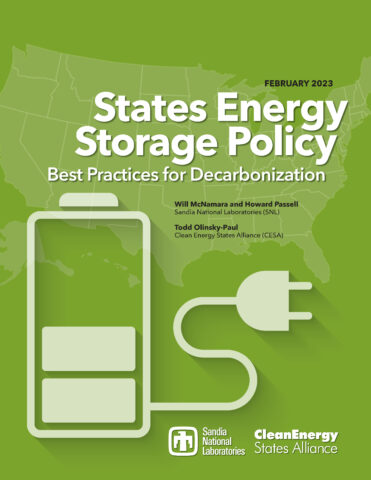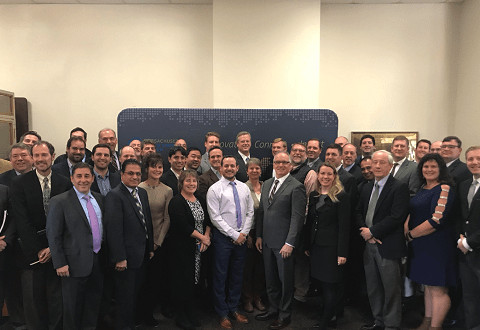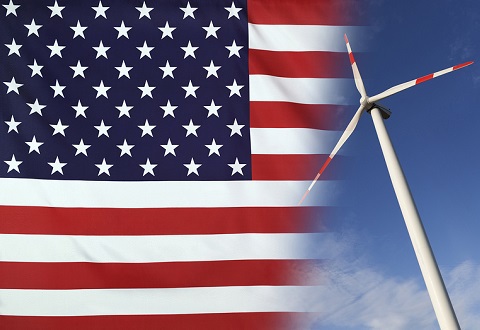Energy Storage Technology Advancement Partnership
The Energy Storage Technology Advancement Partnership (ESTAP) is a federal-state funding and information sharing project that aims to accelerate the deployment of electrical energy storage technologies in the U.S., through the creation of technical assistance and co-funding partnerships between states and the U.S. Department of Energy.
ESTAP is funded by the U.S. Department of Energy, Office of Electricity (DOE-OE), managed by Sandia National Laboratories, and administered by the Clean Energy States Alliance.
ESTAP conducts four key activities:
- Project deployment. ESTAP facilitates public/private and state/federal partnerships to support energy storage demonstration project development, by:
- Matching state-supported large-scale energy storage project proposals with the research needs of Sandia National Laboratories and DOE’s Energy Storage Research program in the Office of Electricity
- Matching bench-tested energy storage technologies with federal/state supported demonstration projects to support innovative large scale energy storage deployment projects
- Providing DOE funding for generic engineering, monitoring and assessment, as well as engineering consulting services from Sandia engineers, in support of innovative energy storage projects
- Facilitating cost share for project deployment from states, utilities, foundations, and other stakeholders
- Policy development. ESTAP facilitates federal/state partnerships to support state energy storage policy, program and regulatory development by:
- Providing technical support to state policymakers and regulators in developing energy storage programs, policy and regulations
- Providing expert testimony to legislative committees and in regulatory dockets addressing energy storage
- Analysis. ESTAP conducts analysis of energy storage technical and economic opportunities, in order to support development of energy storage markets, policy, and projects, including:
- Analysis and modeling of proposed project economics
- Analysis of proposed project technical specifications and operational parameters
- Information dissemination. ESTAP disseminates information on energy storage to stakeholders through public communications, including:
- Informational webinars
- Conference presentations
- Project case studies
- Press releases
- Other written communications
The value proposition for participating states is to work closely with the U.S. Department of Energy’s Office of Electricity Delivery and Energy Reliability (DOE-OE) on near-term joint funding and technology deployment; to benefit from project- and policy-specific technical assistance from Sandia National Laboratories and CESA; to join a network of leading states supporting energy storage technology; and to achieve faster progress in electrical energy storage commercialization and economic development.
Background
Electrical energy storage can provide significant support to the realization of many state energy goals, including the increased deployment and integration of renewable energy; reduction of peak demand; support for emissions reduction goals; improved grid and critical infrastructure resiliency; and grid modernization. To achieve energy storage deployment at scale, public funding and support are critical to accelerate progress and achieve cost reductions and increased applications for these technologies, which include batteries, flywheels, thermal storage, site-anywhere compressed air, micro-pumped hydro, and others.
DOE-OE and Sandia National Laboratories (SNL) are interested in accelerating the pace of deployment of distributed electrical energy storage technologies through a cooperative partnership with interested states. Clean Energy States Alliance helps to establish and facilitate these state-federal energy storage technology advancement partnerships, which are funded by DOE-OE through the national lab.
Featured Video - Sterling Municipal Light Department Energy Storage System – A Revolution for the Electric Grid
This ten-minute video showcases the economic and resilient power benefits of a solar PV and battery energy storage system in the town of Sterling, Massachusetts. READ MORE
How to Participate
Anyone can join the ESTAP listserv and receive periodic updates about this project by clicking the link above. Interested stakeholders, including state and municipal policymakers, public utility commissioners, utilities, manufacturers, universities, developers and others are encouraged to participate. Listserv members will receive informational emails and notices of upcoming webinars and other events. ESTAP webinars are offered at no charge.
States, municipalities, and other entities interested in partnering with CESA and DOE-OE to support energy storage deployment projects are invited to contact Todd Olinsky-Paul, ESTAP project director. States and municipalities are asked to use their best efforts to identify and secure state-based funding to help support energy storage projects proposed for deployment in their state. There is no required funding amount to participate, but some state support is necessary in order for DOE-OE/State partnership project deployments to succeed.
For more information on ESTAP, contact Project Director Todd Olinsky-Paul ([email protected] or 802.223.2554).
Any information that you provide on this sign-up form is confidential and is not shared with any third parties. You can unsubscribe from our mailing lists at any time.




